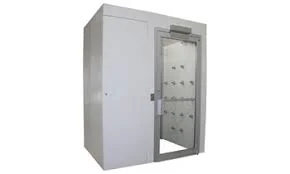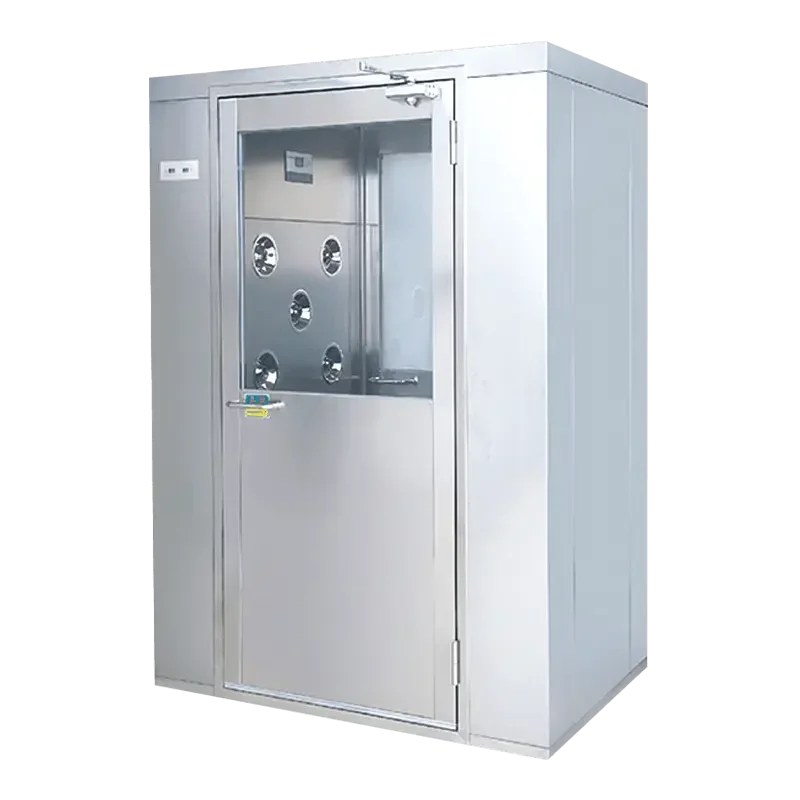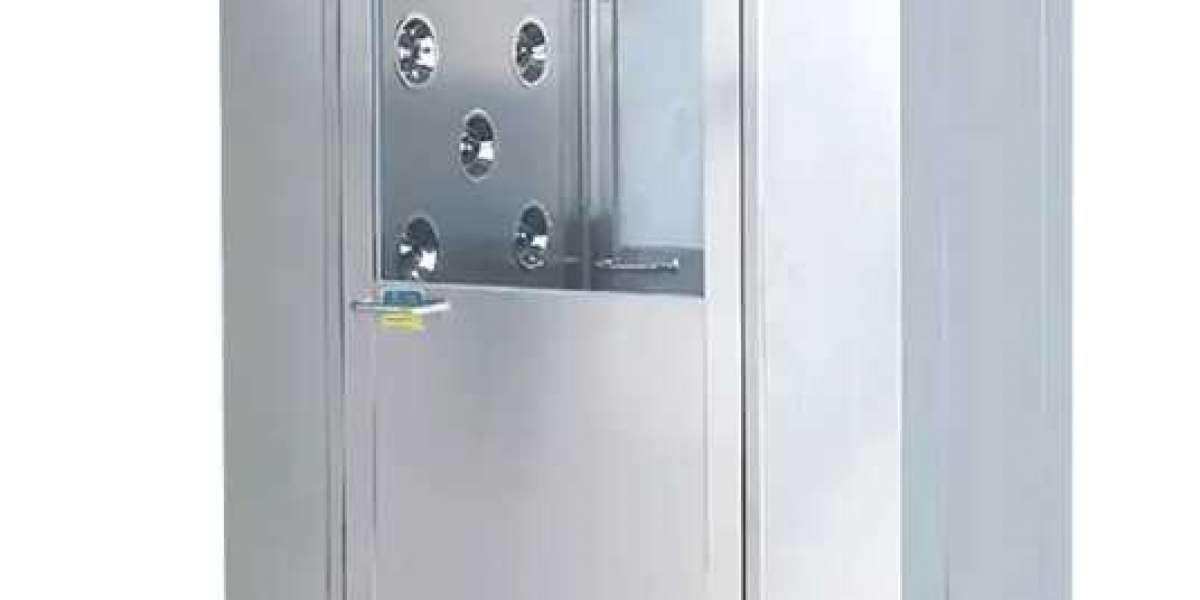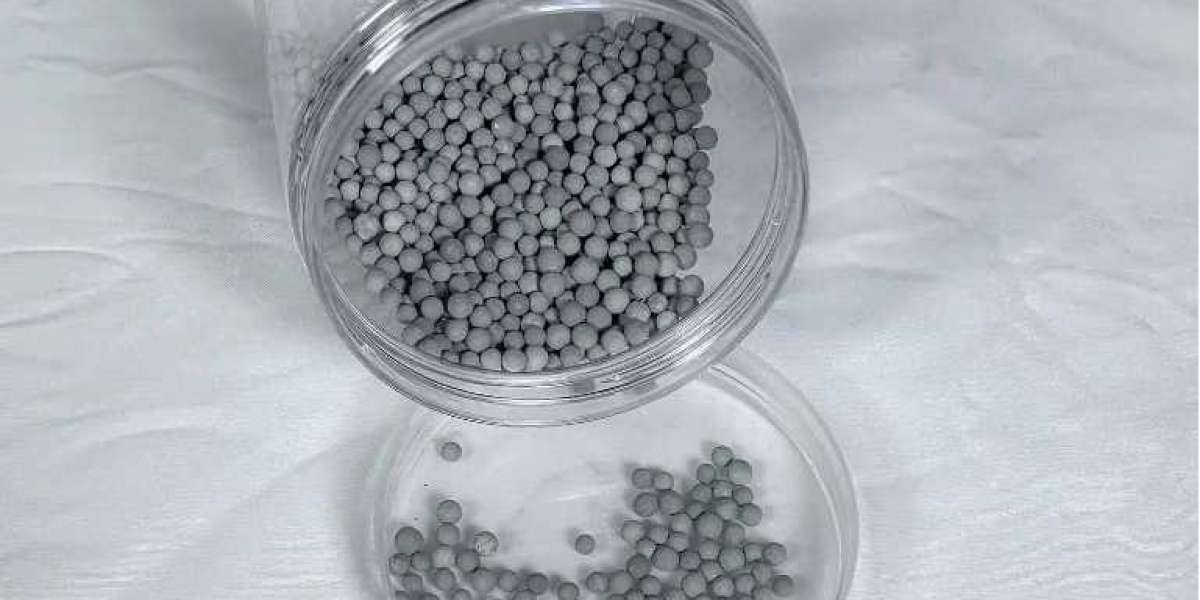In the world of pharmaceutical manufacturing, maintaining a sterile and contamination-free environment is of utmost importance. One crucial tool that plays a vital role in achieving this is the cleanroom air shower. In this article, we will explore the significance of cleanroom air showers in pharmaceutical manufacturing and how they contribute to ensuring product quality and safety.
I. Understanding Cleanroom Air Showers
Cleanroom air showers are enclosed spaces equipped with high-velocity, filtered air jets that are designed to remove surface contaminants from personnel, equipment, and materials before entering a cleanroom environment. The primary purpose of cleanroom air showers is to minimize the introduction of particles and microorganisms into the controlled environment, thus reducing the risk of contamination.
B. How Cleanroom Air Showers Work
Cleanroom air showers operate on the principle of forced-air circulation. When an individual or object enters the air shower, high-velocity air jets are released from multiple nozzles, creating a turbulent airflow. This turbulent airflow dislodges and removes loose particles from the surface, effectively cleansing the person or object.
C. Importance of Air Shower Placement
Strategic placement of air showers within the cleanroom facility is crucial. They are typically installed at the entrance or transition areas between different cleanroom zones. This placement ensures that personnel and materials are thoroughly decontaminated before entering critical areas, minimizing the risk of cross-contamination.

II. Contamination Control in Pharmaceutical Manufacturing
A. Risks and Consequences of Contamination
Contamination in pharmaceutical manufacturing can have severe consequences, including compromised product quality, loss of consumer trust, regulatory non-compliance, and potential harm to patients. Contaminants can include particles, microorganisms, chemicals, and even human-generated contaminants such as skin flakes and hair.
B. Regulatory Standards and Guidelines
Pharmaceutical manufacturing facilities must adhere to strict regulatory standards and guidelines to ensure product safety and efficacy. Regulatory bodies such as the FDA (Food and Drug Administration) and EMA (European Medicines Agency) provide guidelines on cleanroom design, operation, and maintenance to prevent contamination and ensure compliance.
C. Role of Cleanroom Air Showers in Contamination Prevention
Cleanroom air showers play a critical role in contamination prevention by effectively removing surface contaminants from personnel, equipment, and materials. By reducing the number of particles and microorganisms introduced into the cleanroom environment, air showers help maintain the required cleanliness levels and minimize the risk of product contamination.
III. Benefits of Cleanroom Air Showers in Pharmaceutical Manufacturing
A. Removal of Surface Contaminants
Cleanroom air showers are highly effective in removing loose particles, dust, and other surface contaminants from personnel, equipment, and materials. This process significantly reduces the introduction of contaminants into the cleanroom, ensuring a cleaner and safer environment for pharmaceutical manufacturing.
B. Minimizing Particle Generation
In addition to removing surface contaminants, cleanroom air showers also help minimize particle generation. The high-velocity air jets dislodge particles from clothing, hair, and other surfaces, preventing them from becoming airborne and potentially contaminating the cleanroom environment.
C. Personnel Decontamination
Personnel working in pharmaceutical manufacturing facilities can inadvertently introduce contaminants into the cleanroom environment. Cleanroom air showers provide an effective means of personnel decontamination, ensuring that employees are thoroughly cleansed before entering critical areas.
D. Equipment and Material Sterilization
Cleanroom air showers are not limited to personnel decontamination; they can also be used to sterilize equipment and materials. By subjecting these items to the high-velocity air jets, any surface contaminants are removed, reducing the risk of contamination during the manufacturing process.

IV. Design and Features of Cleanroom Air Showers
A. Air Shower Construction and Materials
Cleanroom air showers are typically constructed using stainless steel or other non-porous materials that are easy to clean and maintain. The construction materials should be resistant to corrosion and capable of withstanding frequent use.
B. Airflow Patterns and Filtration Systems
Cleanroom air showers utilize a combination of laminar and turbulent airflow patterns to effectively remove contaminants. The air is filtered through high-efficiency particulate air (HEPA) filters, which remove particles as small as 0.3 micrometers with an efficiency of 99.97%.
C. Control Systems and Monitoring
Cleanroom air showers are equipped with control systems that allow for easy operation and monitoring. These systems enable personnel to adjust parameters such as air velocity, shower duration, and interlocking mechanisms to ensure optimal decontamination.
V. Proper Usage and Maintenance of Cleanroom Air Showers
A. Standard Operating Procedures
To maximize the effectiveness of cleanroom air showers, it is essential to establish and follow standard operating procedures (SOPs). These SOPs should outline the correct usage of air showers, including proper gowning procedures, positioning within the air shower, and duration of the decontamination process.
B. Regular Cleaning and Maintenance
Cleanroom air showers should undergo regular cleaning and maintenance to ensure their optimal performance. This includes cleaning the interior surfaces, replacing filters as recommended by the manufacturer, and conducting routine inspections for any signs of wear or malfunction.
C. Calibration and Validation
Periodic calibration and validation of cleanroom air showers are necessary to ensure that they are operating within the specified parameters. This involves verifying the airflow velocity, pressure differentials, and filter efficiency to guarantee consistent and reliable decontamination.
VI. Case Studies: Cleanroom Air Showers in Pharmaceutical Manufacturing
A. Case Study 1: Improved Product Quality and Reduced Contamination Risks
In a pharmaceutical manufacturing facility, the implementation of cleanroom air showers resulted in a significant reduction in product contamination incidents. The thorough decontamination of personnel and materials before entering critical areas led to improved product quality and reduced contamination risks.
B. Case Study 2: Enhanced Efficiency and Cost Savings
By strategically placing cleanroom air showers at the entrance of each cleanroom zone, a pharmaceutical manufacturing company improved workflow efficiency. The reduced risk of contamination and cross-contamination minimized the need for rework and product recalls, resulting in substantial cost savings.
C. Case Study 3: Compliance with Regulatory Requirements
A pharmaceutical manufacturing facility implemented cleanroom air showers to comply with regulatory guidelines. By ensuring proper decontamination of personnel and materials, the facility achieved regulatory compliance and maintained a reputation for producing safe and high-quality pharmaceutical products.

VII. Future Trends and Innovations in Cleanroom Air Showers
A. Advancements in Air Shower Technology
As technology continues to evolve, cleanroom air showers are expected to become more efficient and user-friendly. Advancements in airflow control, filtration systems, and automation are likely to enhance the decontamination process and improve overall performance.
B. Integration with IoT and Automation
The integration of cleanroom air showers with the Internet of Things (IoT) and automation systems holds great potential. Real-time monitoring, data analysis, and predictive maintenance can optimize the performance of air showers, ensuring continuous and reliable contamination control.
C. Emerging Trends in Cleanroom Design
Cleanroom design is evolving to meet the changing needs of pharmaceutical manufacturing. Trends such as modular cleanrooms, flexible layouts, and advanced materials are likely to influence the design and integration of cleanroom air showers, further enhancing contamination control.
Conclusion
Cleanroom air showers are an indispensable component in pharmaceutical manufacturing, ensuring the production of safe and high-quality products. By effectively removing surface contaminants, minimizing particle generation, and facilitating personnel decontamination, these air showers play a crucial role in maintaining a sterile environment. As technology continues to advance, we can expect further innovations in cleanroom air shower systems, leading to even more efficient and reliable contamination control in the pharmaceutical industry. With their vital role in contamination prevention, cleanroom air showers will continue to be an essential tool in pharmaceutical manufacturing for years to come.
How to Choose The Right Cleanroom Air Showers For Your Clean Room








